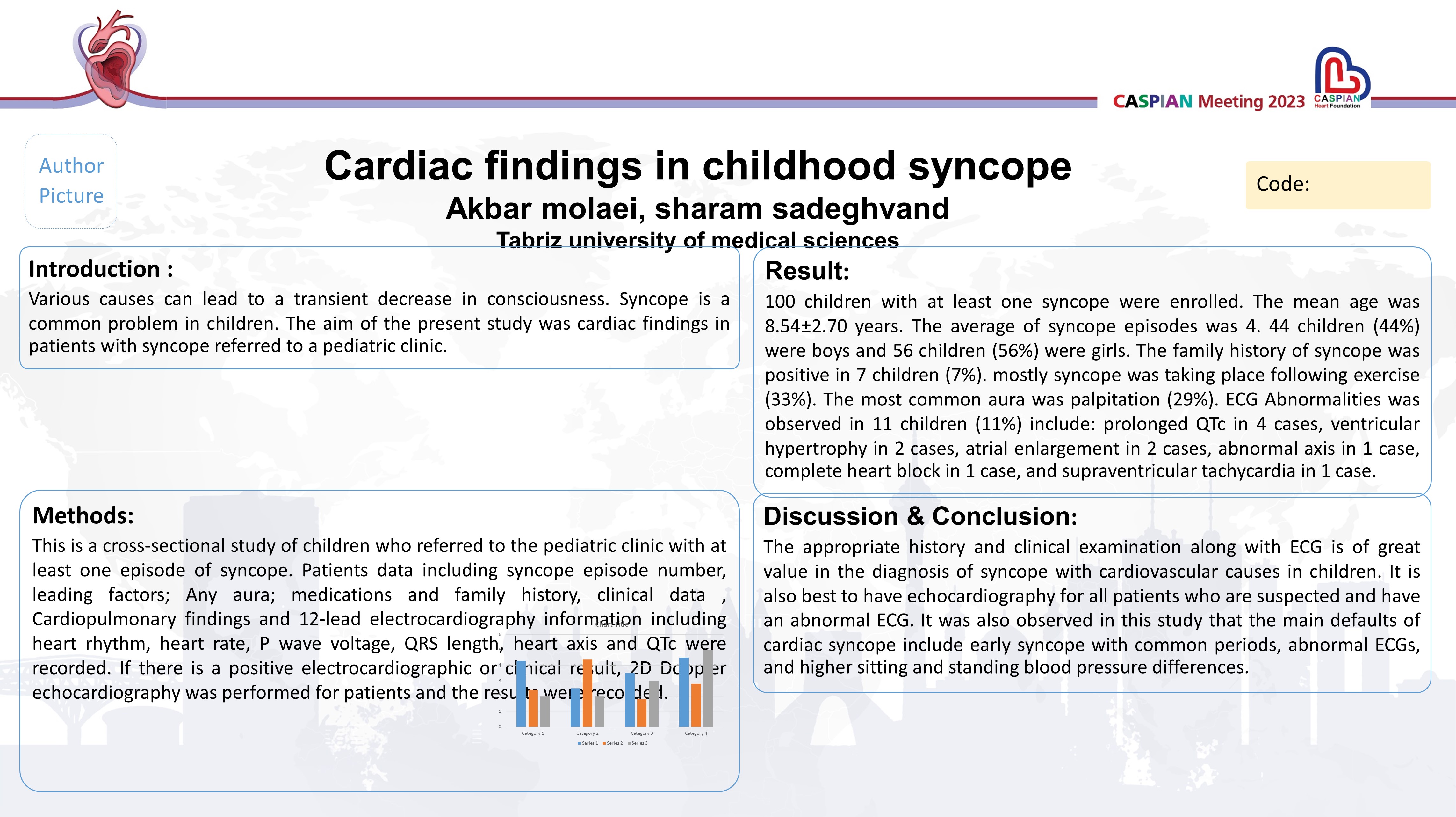Cardiac findings in childhood syncope
Code: G-05471
Authors: Akbar Molaei © ℗, Shahram Sadeghvand
Schedule: Not Scheduled!
Download: Download Poster
Abstract:
Background
Background: Various causes can lead to a transient decrease in consciousness. Syncope is a common problem in children. The aim of the present study was cardiac findings in patients with syncope referred to a pediatric clinic.
Methods
This is a cross-sectional study of children who referred to the pediatric clinic with at least one episode of syncope. Patients data including syncope episode number, leading factors; Any aura; medications and family history, clinical data , Cardiopulmonary findings and 12-lead electrocardiography information including heart rhythm, heart rate, P wave voltage, QRS length, heart axis and QTc were recorded. If there is a positive electrocardiographic or clinical result, 2D Doppler echocardiography was performed for patients and the results were recorded.
Results
100 children with at least one syncope were enrolled. The mean age was 8.54±2.70 years. The average of syncope episodes was 4. 44 children (44%) were boys and 56 children (56%) were girls. The family history of syncope was positive in 7 children (7%). mostly syncope was taking place following exercise (33%). The most common aura was palpitation (29%). ECG Abnormalities was observed in 11 children (11%) include: prolonged QTc in 4 cases, ventricular hypertrophy in 2 cases, atrial enlargement in 2 cases, abnormal axis in 1 case, complete heart block in 1 case, and supraventricular tachycardia in 1 case.
Conclusions
The appropriate history and clinical examination along with ECG is of great value in the diagnosis of syncope with cardiovascular causes in children. It is also best to have echocardiography for all patients who are suspected and have an abnormal ECG. It was also observed in this study that the main defaults of cardiac syncope include early syncope with common periods, abnormal ECGs, and higher sitting and standing blood pressure differences.
Keywords
Syncope, Vasovagal Disorder, Children, Mortality, Cardiac Syncope
